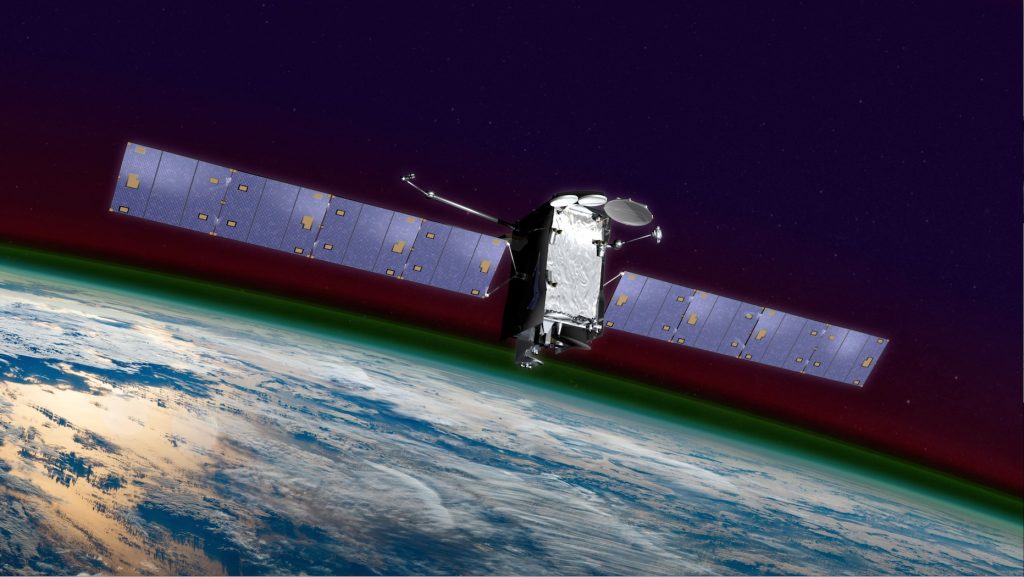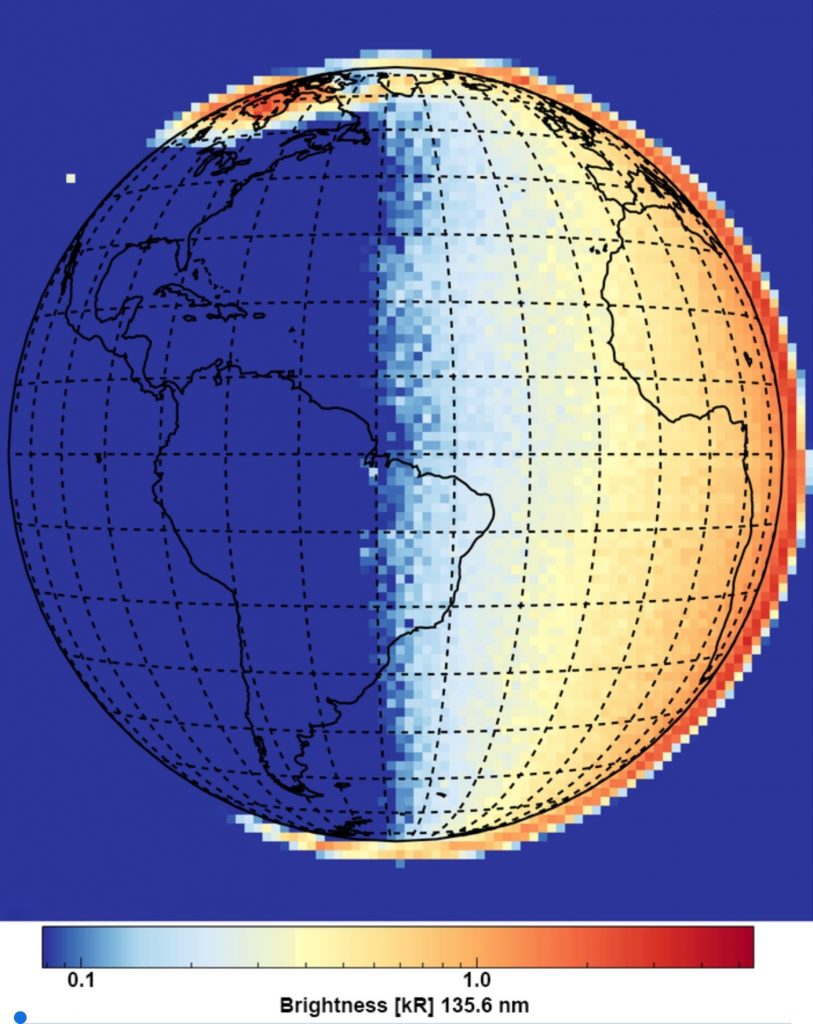Global-Scale Observations of Limb and Disk (GOLD)
Summarized by Laurie Averill, Solar System Ambassador, based on talks by GOLD Mission scientists at the Laboratory for Atmosphere and Space Physics, University of Colorado at Boulder—Dr. Richard Eastes, Primary Investigator who is a physicist studying remote sensing data for space weather and space environment research with expertise in far-ultraviolet and molecular emissions for remote sensing of the Earth’s thermosphere, Dr. Katelyn Greer, Research Scientist, who studies near-Earth environment and its connection to the lower atmosphere, and Dr. Stan Solomon. Co-Investigator, Geo-Space Frontier Section of the High Altitude Observatory, National Center for Atmospheric Research, who studies the physics and chemistry of the upper atmosphere and ionosphere.
Earth’s aurora borealis have long fascinated me. Learning about NASA’s GOLD (Global-scale Observations of Limb and Disk) mission has helped me to begin to understand a little about why they occur.
The Spacecraft
Launched from the Guiana Space Centre, Kourou, French Guiana, on January 25, 2018, the GOLD instrument was piggybacked on the Earth-ward side of the much larger 4.5 metric ton SES-14 communications satellite with about an 50 yard wingspan riding on the Arianespace Ariane Five rocket. High-rate science data (each photon’s location on the sensor is recorded) from the instrument is relayed directly in real time to the ground by a transponder on the satellite. Using solar-powered, electric, ion-stream propulsion, the satellite with the GOLD instrument onboard reached its desired geostationary orbit at 47.5 West Latitude over the equator on September 4, 2018, at 22,236 miles above the Western Hemisphere over the mouth of the Amazon River. GOLD senses within the thermosphere at about 160 kilometers above Earth.
 SES-14 Communications Satellite, 4.5 metric tons with 50 yard wingspan, that hosts GOLD (NASA Visualization)
SES-14 Communications Satellite, 4.5 metric tons with 50 yard wingspan, that hosts GOLD (NASA Visualization)
NASA studies near space as well as exploring the solar system and beyond. Turning the space-based, geo-stationary, the Global-scale Observations of Limb and Disk (GOLD) instrument toward Earth, NASA seeks to understand this dynamic near-Earth environment, the boundary between Earth and space, and how the upper atmosphere is affected by the Sun and space from above and by Earth’s magnetic field and weather from below.

